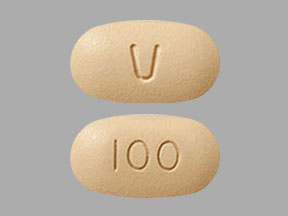Venclexta Disease Interactions
There are 4 disease interactions with Venclexta (venetoclax).
Venetoclax (applies to Venclexta) hepatic impairment
Moderate Potential Hazard, Moderate plausibility. Applicable conditions: Liver Disease
In vitro studies demonstrated that venetoclax is predominantly metabolized in the liver by CYP450 3A4/5. Based on pharmacokinetic analysis with subjects with mild and moderate hepatic impairment, the venetoclax exposures were similar to those with normal hepatic function; therefore, no dose adjustment is recommended in patients with mild or moderate hepatic impairment. Based on the drug metabolism, an increase in adverse events might result in patients with moderate to severe hepatic impairment. It is recommended to monitor patients with moderate to severe hepatic impairment carefully for signs of toxicity during the initiation and the weekly dose ramp-up phase. Caution is advised when using this agent in patients with severe hepatic impairment as it pharmacokinetics has not been studied.
Venetoclax (applies to Venclexta) neutropenia
Moderate Potential Hazard, Moderate plausibility. Applicable conditions: Infection - Bacterial/Fungal/Protozoal/Viral, Fever
Venetoclax can cause neutropenia. It is recommended to monitor for fever and signs suggestive of an infection. Monitor complete blood count during the course of therapy and reduce dose or interrupt treatment for severe neutropenia. Therapy with this agent should be administered cautiously in patients with preexisting bone marrow depression or blood dyscrasias.
Venetoclax (applies to Venclexta) TLS/renal
Moderate Potential Hazard, Moderate plausibility. Applicable conditions: Tumor Lysis Syndrome, Renal Dysfunction
Based on pharmacokinetic analysis with subjects with mild and moderate renal impairment, the venetoclax exposures were similar to those with normal renal function; therefore, no dose adjustment is recommended in these patients. The pharmacokinetics of venetoclax has not been studied in subjects with severe renal impairment. Patients with reduced renal function are at increased risk of tumor lysis syndrome (TLS) and these patients may require more intensive monitoring and care to reduce the risk of TLS at the start of treatment. Patients should be assessed for risk factor that may contribute to an increase risk for TLS and complete blood chemistries should be monitored regularly. Dose interruption is recommended if needed based on clinical findings.
Venetoclax (applies to Venclexta) vaccination
Moderate Potential Hazard, Moderate plausibility.
The administration of live attenuated vaccines should be avoided prior to, during, and after therapy with venetoclax until B-cell recovery occurs. It is recommended to be up-to-date with all required immunizations, as recommended by current immunization guidelines, before initiating therapy. The safety and efficacy of immunization with live attenuated vaccines during or following venetoclax therapy have not been studied. Venetoclax may interfere with the response to immunization and the vaccinations may be less effective.
Switch to professional interaction data
Venclexta drug interactions
There are 465 drug interactions with Venclexta (venetoclax).
Venclexta alcohol/food interactions
There is 1 alcohol/food interaction with Venclexta (venetoclax).
More about Venclexta (venetoclax)
- Venclexta consumer information
- Check interactions
- Compare alternatives
- Pricing & coupons
- Reviews (11)
- Drug images
- Side effects
- Dosage information
- Patient tips
- During pregnancy
- FDA approval history
- Drug class: miscellaneous antineoplastics
- Breastfeeding
Related treatment guides
Drug Interaction Classification
| Highly clinically significant. Avoid combinations; the risk of the interaction outweighs the benefit. | |
| Moderately clinically significant. Usually avoid combinations; use it only under special circumstances. | |
| Minimally clinically significant. Minimize risk; assess risk and consider an alternative drug, take steps to circumvent the interaction risk and/or institute a monitoring plan. | |
| No interaction information available. |
See also:
Further information
Always consult your healthcare provider to ensure the information displayed on this page applies to your personal circumstances.


